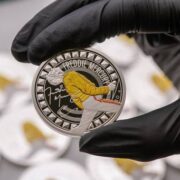Spain’s wild horses in peril, despite key role in wildfire prevention
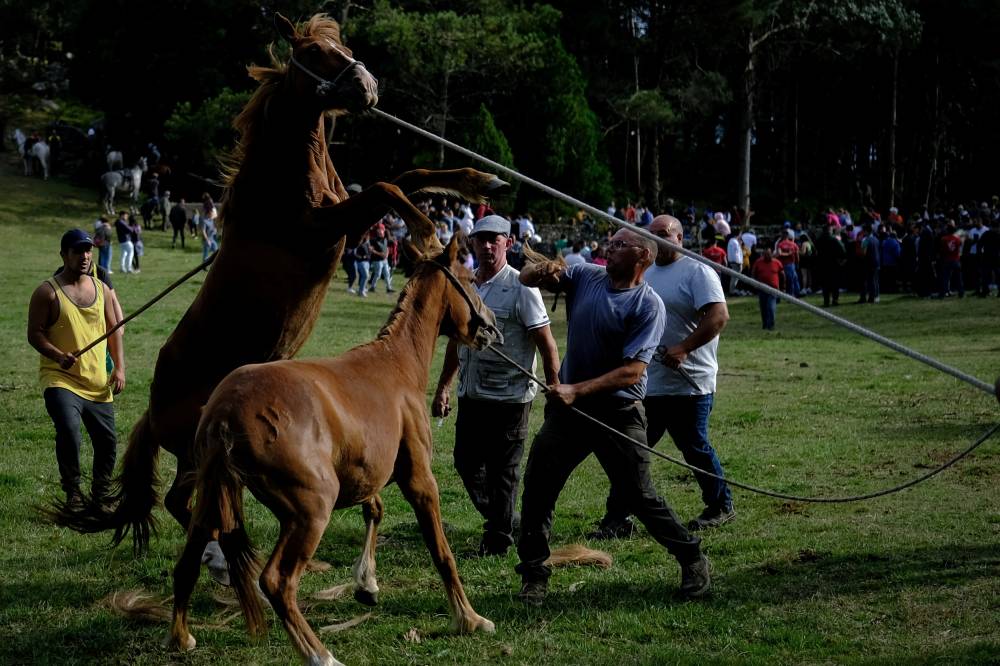
AMIL, SPAIN—The wildfires that used to burn each summer in the woods above the Spanish village of Barro have diminished to almost none since Lucia Perez started grazing wild horses there.
“There used to be fires every year but since 2019 when we started coming here we’ve had one small fire in the first year and nothing since,” said Perez, 37, explaining how by clearing the undergrowth between the trees the horses help stop fires igniting and spreading.
Fire prevention is one of several roles wild horses play in preserving the northwestern region of Galicia’s delicate ecosystems, scientists say.
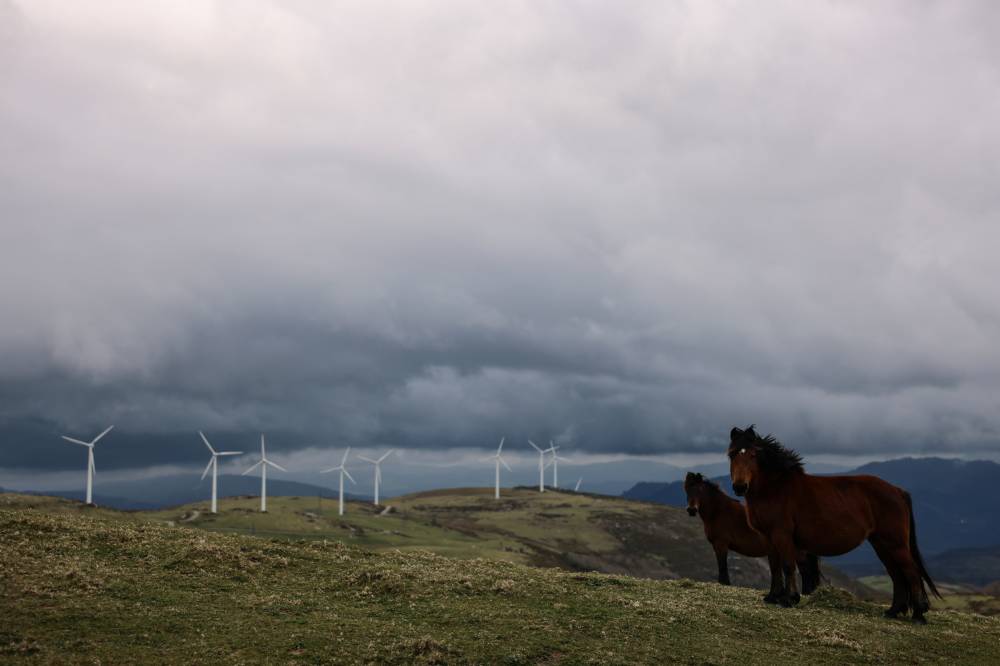
But Europe’s largest herd of wild horses has dwindled to less than half the 22,000 that roamed its mountains, forests and heathlands in the 1970s.
On the Serra da Groba heath 80 km southwest of Barro, a herd of wild horses feasts on the yellow flowers of gorse, “selectively clearing” a plant that is especially combustible, said Laura Lagos, a researcher at the University of A Coruna.
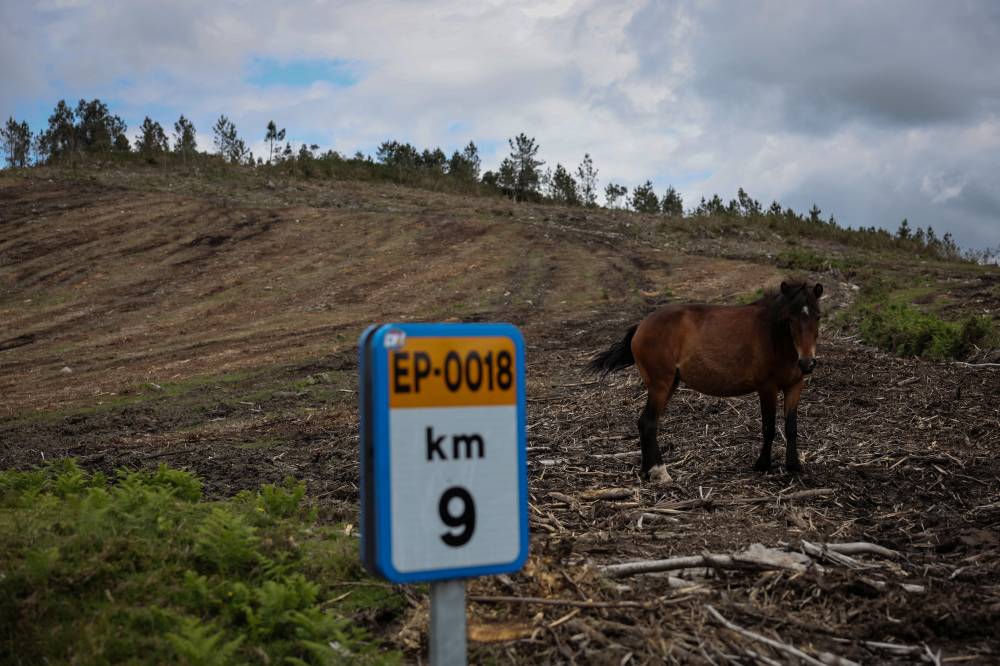
This allows other plants such as purple-flowering heather and white asphodels to thrive, she said. It also helps preserve the heather around peat bogs, abundant in sphagnum mosses, one of the most effective ecosystems for capturing carbon.
Environmental impact
A 2021 study by the University of A Coruna, in which Lagos took part, found that grazing heathlands by wild horses was best for preventing wildfires while promoting plant biodiversity and capturing carbon, when compared to other potential uses of the land such as planting long-term pine forests, short-term Eucalyptus forests or grazing by domestic animals.
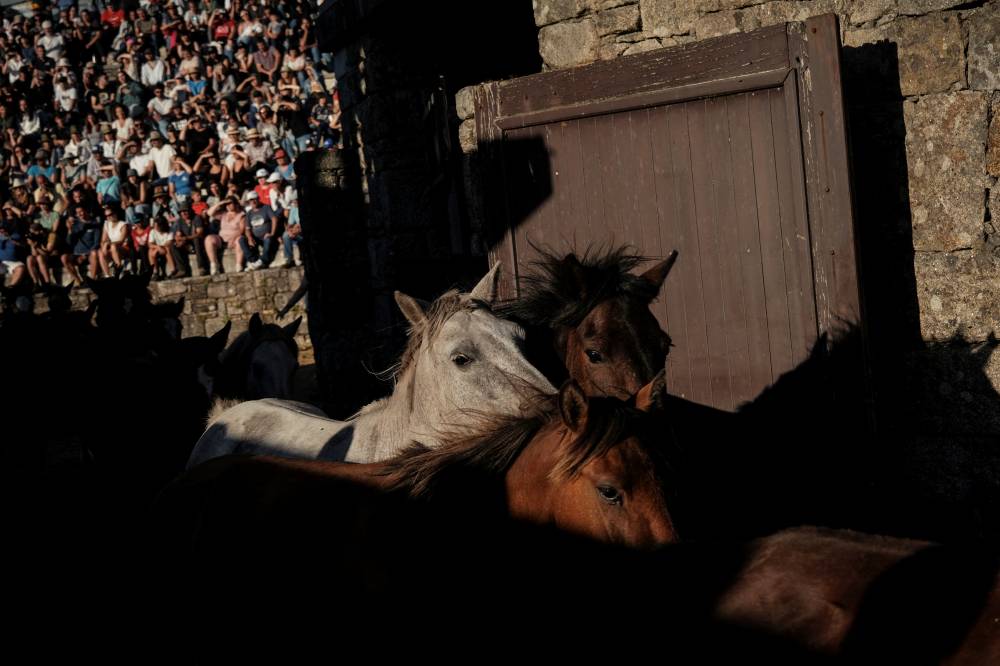
“Studies show that where wild horses graze the heath’s biodiversity increases,” Lagos said. “They are a fundamental part of the ecosystem. They benefit both the flora and the fauna associated with these open spaces.”
Grazing by sheep and cows can also prevent fires, but the horses have particular physiological characteristics that allow them to thrive in Galicia’s terrain, including moustaches that appear designed to protect their lips from the prickly gorse.
“They seem specially adapted to eat gorse and are hardy—a cow can’t live year round on the heath,” Lagos said.
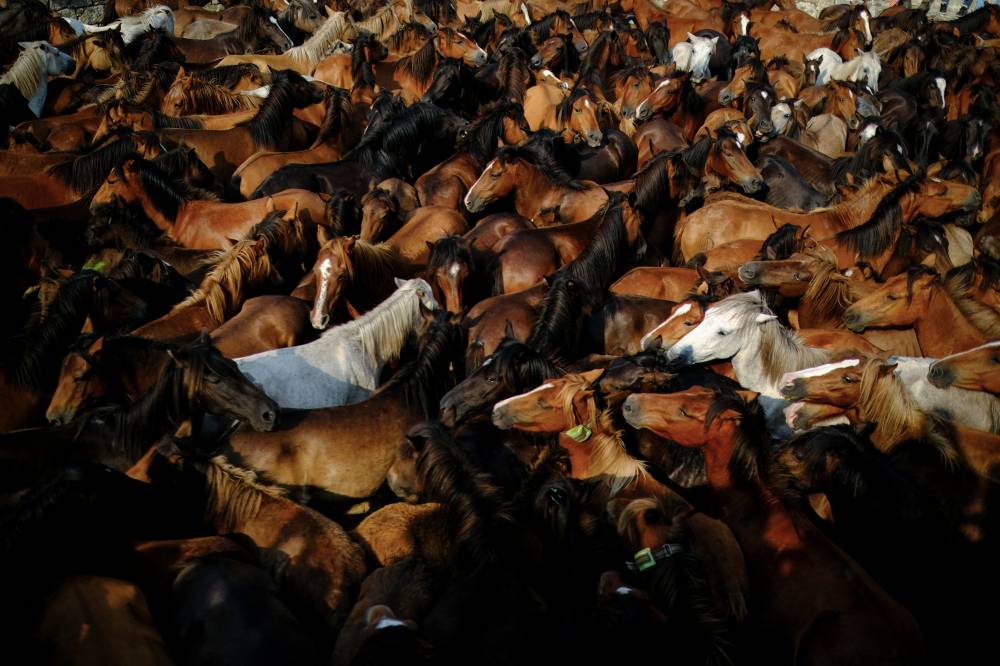
Rock carvings
Drier, hotter weather due to climate change is increasing the frequency of wildfires in Galicia. The region lost 96,900 hectares through fires between 2001 and 2023, according to Global Forest Watch.
This has coincided with the proliferation in Galicia of the Eucalyptus tree, a pyrophyte species that depends on fires to help it release and spread seeds. Eucalyptus trees also reduce pasture for the horses as only ferns grow under them.
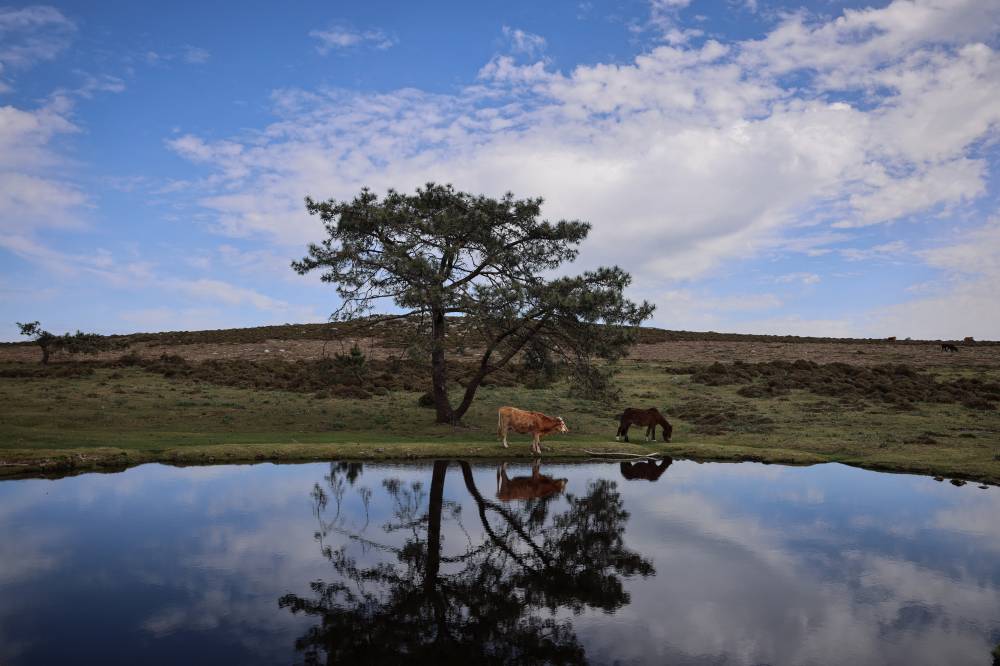
Brought from Australia to Galicia by a missionary in the 19th century, they have spread thanks to demand for their wood from local pulp mills and now account for 28 percent of all trees in Galicia, according to a local government study.
In September, the village of San Colmede was spared from a fire that ripped through 270 hectares of Eucalyptus and scrub in the surrounding hills thanks to grazing by animals and by the native oaks, sweet chestnuts and birches that grow near the village and burn more slowly, acting as a shield, said firefighter Cesar Leiros.
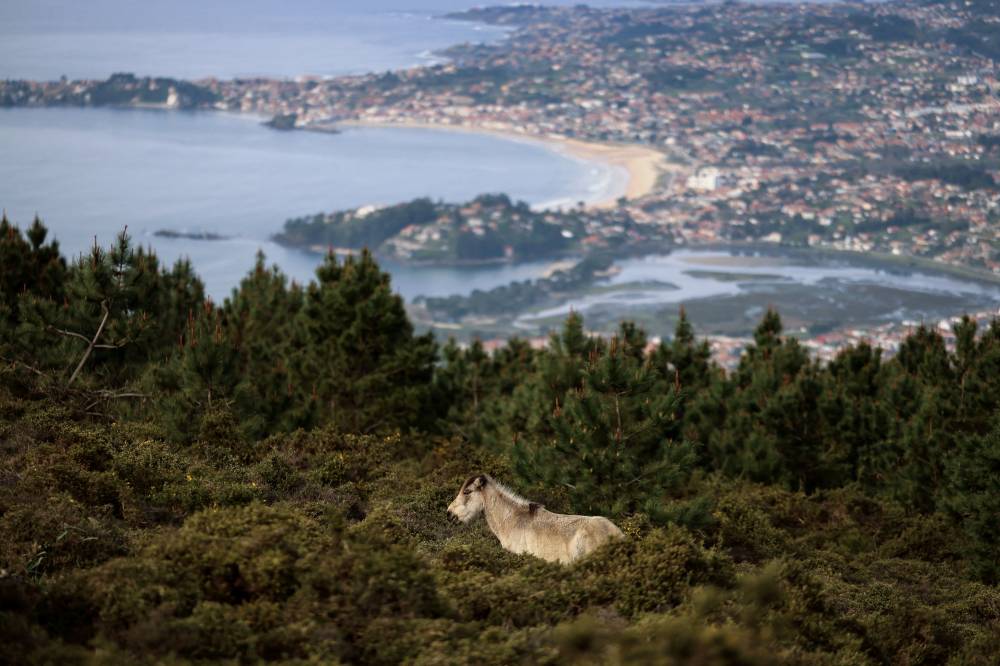
“We saw the village surrounded by fire but thanks to native trees, the clearing we do, and the clearing our animals do, the village was saved,” Leiros said.
Rock carvings depicting wild horses being hunted by men are evidence of their existence in Galicia dating back to the Neolithic period.
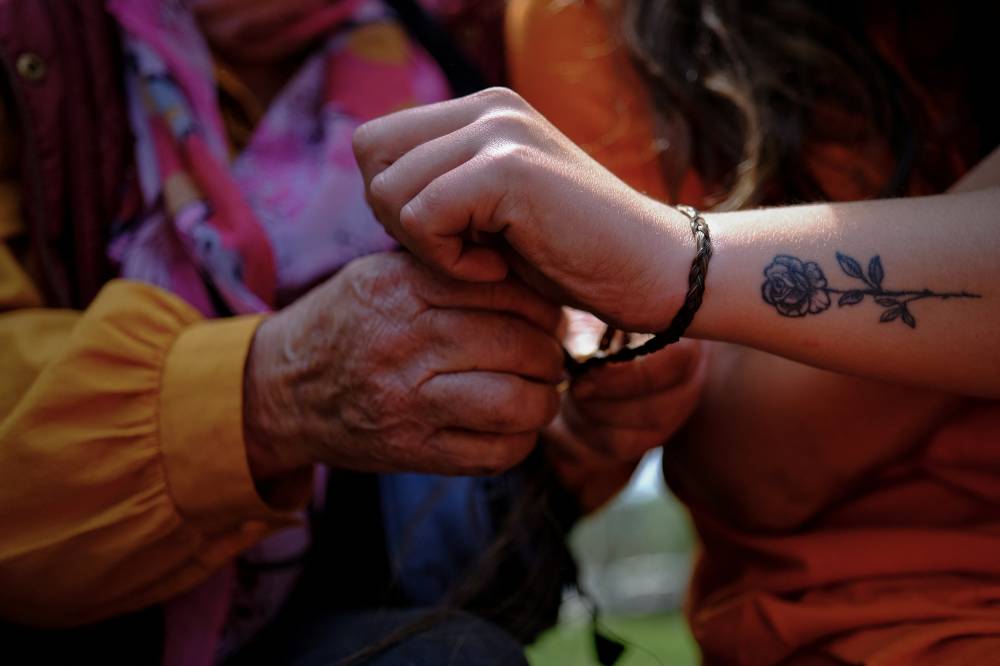
In time, humans and horses developed a relationship. Known as besteiros in the Galician dialect, people would look out for the health of the free-roaming horses in exchange for occasionally domesticating one or selling it for meat.
They would round up the horses once a year in events known as the rapa das bestas or “shearing of the beasts” to be deloused, vaccinated, and have their manes cut to make it harder for wolves to catch them.
Reuters, the news and media division of Thomson Reuters, is the world’s largest multimedia news provider, reaching billions of people worldwide every day. Reuters provides business, financial, national and international news to professionals via desktop terminals, the world's media organizations, industry events and directly to consumers.












